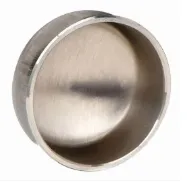-
Cangzhou Yulong Steel Co., Ltd.
-
Phone:
+86 13303177267 -
Email:
admin@ylsteelfittings.com
- English
- Arabic
- Italian
- Spanish
- Portuguese
- German
- kazakh
- Persian
- Greek
- French
- Russian
- Polish
- Thai
- Indonesian
- Vietnamese
- Zulu
- Korean
- Uzbek
- Hindi
- Serbian
- Malay
- Ukrainian
- Gujarati
- Haitian Creole
- hausa
- hawaiian
- Hebrew
- Miao
- Hungarian
- Icelandic
- igbo
- irish
- Japanese
- Javanese
- Kannada
- Khmer
- Rwandese
- Afrikaans
- Albanian
- Amharic
- Armenian
- Azerbaijani
- Basque
- Belarusian
- Bengali
- Bosnian
- Bulgarian
- Catalan
- Cebuano
- China
- China (Taiwan)
- Corsican
- Croatian
- Czech
- Danish
- Esperanto
- Estonian
- Finnish
- Frisian
- Galician
- Georgian
- Kurdish
- Kyrgyz
- Lao
- Latin
- Latvian
- Lithuanian
- Luxembourgish
- Macedonian
- Malgashi
- Malayalam
- Maltese
- Maori
- Marathi
- Mongolian
- Myanmar
- Nepali
- Norwegian
- Norwegian
- Occitan
- Pashto
- Dutch
- Punjabi
- Romanian
- Samoan
- Scottish Gaelic
- Sesotho
- Shona
- Sindhi
- Sinhala
- Slovak
- Slovenian
- Somali
- Sundanese
- Swahili
- Swedish
- Tagalog
- Tajik
- Tamil
- Tatar
- Telugu
- Turkish
- Turkmen
- Urdu
- Uighur
- Welsh
- Bantu
- Yiddish
- Yoruba

Dec . 13, 2024 14:28 Back to list
using galvanized pipe for natural gas
Using Galvanized Pipe for Natural Gas What You Need to Know
Natural gas is a widely used energy source, powering homes, businesses, and industries across the globe. As the demand for this fuel grows, it becomes crucial to use materials that ensure safety, longevity, and efficiency in the distribution of natural gas. One material that has been traditionally used for gas pipelines is galvanized pipe. This article explores the use of galvanized pipe for natural gas, including its advantages, potential drawbacks, and alternative options.
What is Galvanized Pipe?
Galvanized pipe is steel pipe that has undergone a process of galvanization, which involves coating the steel with zinc to prevent rust and corrosion. This protective layer makes galvanized pipe suitable for various applications, including plumbing, construction, and, historically, gas distribution systems. The durability of galvanized pipe has made it a popular choice for outdoor and underground installations.
Advantages of Using Galvanized Pipe for Natural Gas
1. Corrosion Resistance The primary benefit of using galvanized pipe is its resistance to corrosion. Natural gas pipelines are often subjected to harsh conditions, including moisture and soil acidity. The zinc coating helps protect the steel from rusting, extending the lifespan of the pipeline.
2. Strength and Durability Galvanized pipes are strong and can withstand significant pressure, making them suitable for transporting natural gas. Their robust construction makes them resistant to damage from external forces.
3. Cost-Effective Galvanized pipes are relatively inexpensive compared to other materials, such as stainless steel or copper. For large-scale natural gas distribution projects, using galvanized pipe can lead to significant savings.
4. Easy Installation Galvanized pipes are lightweight and easy to work with, allowing for quicker installation times. This can be a strong advantage in both residential and commercial projects.
Potential Drawbacks
Despite the advantages, using galvanized pipe for natural gas does come with some concerns.
using galvanized pipe for natural gas

1. Internal Corrosion Although the exterior of galvanized pipes is protected, the inside can still corrode over time, especially when exposed to water or other corrosive substances. Accumulation of rust can result in reduced flow and potentially hazardous blockages.
2. Compatibility Issues Galvanized pipe can sometimes be incompatible with certain types of fittings, which may require the use of specialized adapters. Improper connections can lead to leaks or other issues.
3. Regulatory Standards Many safety regulations and building codes have shifted away from the use of galvanized pipe for natural gas lines in favor of more modern materials (like polyethylene or steel). It's vital to check local regulations before opting for galvanized pipe.
4. Potential for Zinc Leaching In some circumstances, zinc can leach into the gas, which could cause issues with appliances that rely on gas for operation. While this is a rare problem, it is worth considering when choosing materials.
Alternative Materials
Given the concerns associated with galvanized pipe, other materials are often preferred for natural gas distribution today. Some of these materials include
- Polyethylene (PE) PE is a flexible, lightweight plastic that is highly resistant to corrosion and is often used for underground gas lines. It provides a safe and durable option without the risks associated with metal piping.
- Carbon Steel Carbon steel is commonly used in industrial applications and for high-pressure systems. It offers great strength and durability, but it must be properly coated or treated to prevent corrosion.
- Stainless Steel Stainless steel offers excellent corrosion resistance and can handle high-pressure applications. It is often used in commercial settings and for modern gas line installations.
Conclusion
While galvanized pipe has been a traditional choice for natural gas distribution due to its cost-effectiveness and corrosion resistance, it is essential to weigh its advantages against potential drawbacks. As regulations and technology evolve, alternative materials may offer better safety and efficiency. When planning a natural gas project, consulting with plumbing and gas experts can ensure that the most suitable materials are chosen, meeting both safety standards and the specific needs of the installation.
Latest news
-
ANSI 150P SS304 SO FLANGE
NewsFeb.14,2025
-
ASTM A333GR6 STEEL PIPE
NewsJan.20,2025
-
ANSI B16.5 WELDING NECK FLANGE
NewsJan.15,2026
-
ANSI B16.5 SLIP-ON FLANGE
NewsApr.19,2024
-
SABS 1123 FLANGE
NewsJan.15,2025
-
DIN86044 PLATE FLANGE
NewsApr.19,2024
-
DIN2527 BLIND FLANGE
NewsApr.12,2024
-
JIS B2311 Butt-Welding Fittings LR/SR 45°/90° /180°Seamless/Weld
NewsApr.23,2024











